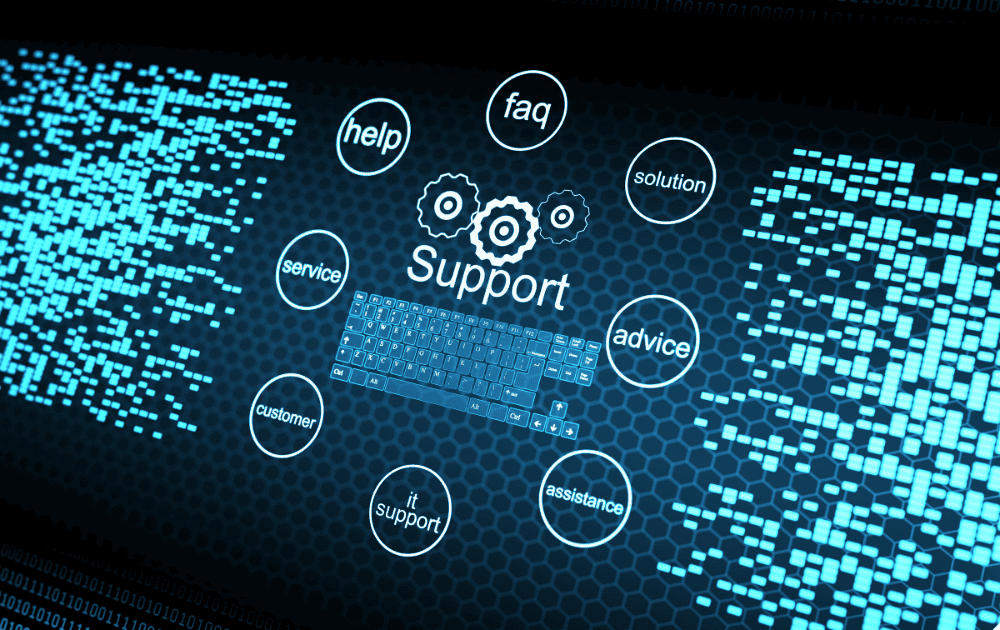Having a clear escalation matrix in IT support is key to managing issues efficiently and ensuring they get resolved in a timely manner. Think of it as a step-by-step guide for escalating support tickets, incidents, or service requests when necessary.
The Importance of an Escalation Matrix
An escalation matrix plays a vital role in streamlining the escalation process within an IT support environment. It helps in facilitating clear communication, defining escalation paths, and ensuring that issues are escalated to the appropriate level of expertise within the organization. By establishing predefined escalation procedures, organizations can enhance their responsiveness, minimize downtime, and improve overall customer satisfaction.
Key Components of an Escalation Matrix
- Hierarchical Support Tiers: Define the various levels of support within the organization, ranging from frontline help desk staff to higher-tier specialists or management.
- Escalation Paths: Establish clear pathways for escalating issues based on their severity, complexity, or impact on operations.
- Escalation Contacts: Identify key individuals or teams responsible for handling escalations at each support tier, along with their contact information.
- Escalation Triggers: Determine the conditions or criteria that warrant escalation, such as response time breaches, critical outages, or unresolved issues.
- Communication Protocol: Define the channels and methods of communication to be used during escalations, ensuring that all stakeholders are informed promptly.
Incorporating these key components into the escalation matrix helps ensure that IT support teams can address escalating issues effectively and efficiently, leading to quicker resolutions and improved service delivery.

Designing Your Escalation Matrix
Building an effective IT support escalation matrix requires careful planning and consideration. Two critical aspects of designing your escalation matrix include defining support tiers and levels, along with establishing clear communication channels. By focusing on these elements, you can create a seamless escalation process that enhances your IT support team's responsiveness and efficiency.
Defining Support Tiers and Levels
Support tiers and levels are essential for structuring the escalation process and determining the appropriate response to various IT issues. Categorizing support requests into tiers based on complexity and severity allows organizations to prioritize and allocate resources efficiently. Here’s a typical breakdown of support tiers and levels:
| Tier Level | Description |
| Tier 1 | Basic support for common issues (e.g., password resets, software installations) |
| Tier 2 | Intermediate support for more complex technical problems (e.g., network configuration, hardware troubleshooting) |
| Tier 3 | Advanced support for critical and escalated issues that require specialized expertise (e.g., server failures, network outages) |
Defining clear criteria for each support tier helps guide support staff on when and how to escalate issues effectively, ensuring timely resolution and minimizing disruptions to IT services.
Establishing Clear Communication Channels
Effective communication is key to the success of an IT support escalation matrix. Establishing clear communication channels ensures that information flows seamlessly between support tiers and enables swift escalation when necessary. Here are some common communication channels used in escalation matrices:
| Channel | Description |
| Phone | Immediate communication for urgent and critical issues |
| Formal documentation of escalations and resolutions | |
| Ticketing System | Tracking and managing support requests throughout the escalation process |
| Collaboration Tools | Real-time collaboration for troubleshooting complex issues |
Defining and implementing communication channels within the escalation matrix enables IT teams to facilitate efficient collaboration, streamline escalation workflows, and enhance overall service delivery. This proactive approach helps organizations address IT issues promptly while upholding service level agreements with customers and stakeholders.

Developing Escalation Procedures
Managing IT support escalations effectively relies on well-defined procedures. This section focuses on two critical aspects of developing these procedures: incident identification and classification, as well as escalation triggers and criteria. By honing in on these elements, you can streamline your escalation process and ensure that issues are addressed promptly and efficiently.
Incident Identification and Classification
Incident identification involves the process of recognizing and categorizing IT issues as they arise. It is crucial to establish a standardized method for logging and documenting incidents to ensure a systematic approach to handling escalations. By accurately identifying and classifying incidents, IT support teams can prioritize and respond to issues in a timely manner.
The following table outlines a simple incident classification matrix based on the severity and impact of the IT issue:
| Incident Classification | Description |
| Critical | Severe disruption to business operations, affecting multiple users or critical systems. Immediate resolution required. |
| High | Significant impact on productivity or services, affecting a specific department or service. Urgent attention needed. |
| Medium | Moderate disruption that can be contained or managed within a reasonable timeframe. Requires timely resolution. |
| Low | Minor issues or requests that have minimal impact on operations. Can be addressed during regular support hours. |
Establishing clear incident identification and classification criteria helps streamline the escalation process and ensure that IT support resources are allocated efficiently based on the severity and impact of each incident.
Escalation Triggers and Criteria
Escalation triggers define the conditions under which an incident needs to be escalated to a higher support tier or management level. These triggers are predefined thresholds or conditions that signal the need for additional expertise or resources to resolve the issue effectively.
The following table outlines common escalation triggers and criteria based on the complexity and impact of the incident:
| Escalation Trigger | Criteria |
| Long Resolution Time | If an incident surpasses the predefined resolution time without progress. |
| Service Level Agreement (SLA) Breach | When an incident violates the agreed-upon SLA response or resolution time. |
| Technical Complexity | Issues requiring specialized technical skills beyond the current support level. |
| High Priority Stakeholders | Incidents impacting senior management or key business stakeholders. |
| Repeated Incidents | Persistent issues that recur despite previous resolutions. |
Establishing clear escalation triggers and criteria enables IT support teams to ensure that incidents are escalated promptly and effectively to the appropriate level of expertise. This approach facilitates timely resolution and minimizes the impact on business operations.
Implementing the Escalation Matrix
Once you have designed your IT support escalation matrix, the next crucial step is to effectively implement it within your organization. This involves providing adequate training and familiarization to all staff involved in the escalation process, as well as conducting thorough testing and optimization to ensure its efficiency.
Training and Familiarization
Training plays a pivotal role in the successful implementation of the escalation matrix. It is essential to ensure that all IT support personnel, from frontline agents to managers, are well-versed in the escalation procedures outlined in the matrix. Training sessions should cover the following key areas:
- Understanding the escalation tiers and levels
- Familiarity with escalation triggers and criteria
- Clear communication channels and escalation paths
- Roles and responsibilities of each team member in the escalation process
Regular refresher training sessions are essential to keep staff updated on any revisions or enhancements made to the escalation matrix. Investing in thorough training ensures that all team members are familiar with the escalation process, streamlining the workflow and improving response times for critical issues.
Testing and Optimization
Testing the escalation matrix is essential to identify any potential gaps or bottlenecks in the escalation process. Conducting test scenarios and simulations allows you to gauge the effectiveness of the matrix in real-world situations and make necessary adjustments for optimal performance. During the testing phase, consider the following aspects:
- Simulating various types of incidents and evaluating the response times at each escalation level
- Assessing the clarity and efficiency of communication channels
- Identifying any redundant steps or delays in the escalation process
- Soliciting feedback from staff on the usability and effectiveness of the escalation matrix
Optimization is an ongoing process that involves refining the escalation procedures based on feedback, monitoring performance metrics, and implementing continuous improvements. By regularly reviewing and optimizing the escalation matrix, you can enhance the functionality and effectiveness of your IT support escalation process, leading to improved incident resolution and customer satisfaction.
Implementing a well-structured escalation matrix, along with thorough training and rigorous testing, is essential for effectively managing IT support escalations. Prioritizing training and continuous optimization establishes a robust framework that enhances the efficiency and effectiveness of IT support operations.

Monitoring and Improving
In the context of IT support escalation, continuous monitoring and improvement are key to making the escalation matrix more effective. This section focuses on the critical aspects of tracking escalations and resolutions, along with the importance of gathering feedback and pursuing ongoing enhancements.
Tracking Escalations and Resolutions
Tracking the progression of escalations and the subsequent resolutions is vital for gauging the efficiency and efficacy of the escalation matrix. By documenting each escalation instance and its corresponding resolution, IT teams can identify patterns, recurring issues, and areas for improvement within the support system.
To facilitate tracking, creating a comprehensive table to log escalations can provide valuable insights into the frequency of escalations, resolution times, and the effectiveness of each support tier. This data-driven approach enables IT administrators to pinpoint bottlenecks, optimize response times, and refine the escalation procedures for better outcomes.
Feedback and Continuous Improvement
Feedback mechanisms serve as a cornerstone for refining the IT support escalation matrix. Encouraging feedback from both end-users and support staff provides valuable insights into the efficacy of the escalation procedures, communication channels, and overall support experience.
Actively seeking feedback through surveys, post-escalation reviews, and regular team meetings enables IT managers to pinpoint pain points, identify areas for improvement, and address potential training needs. Incorporating this feedback into the continuous improvement cycle enhances the responsiveness and effectiveness of the escalation matrix, leading to streamlined processes and higher customer satisfaction.
Fostering a culture of continuous improvement within the IT support team also promotes innovation, collaboration, and a proactive approach to managing escalating challenges. Leveraging feedback to drive enhancements and adopting a mindset of continuous learning allows IT organizations to adapt to evolving technology landscapes and deliver exceptional support services that meet the ever-changing needs of stakeholders.
Take Your IT Support to the Next Level!
Ready to transform your IT support processes and enhance customer satisfaction? At LK Tech, we understand the importance of a well-structured escalation matrix. Our help desk in Cincinnati is here to guide you in implementing effective strategies that streamline your support operations. By leveraging our expertise, you can optimize response times, ensure timely issue resolution, and ultimately improve your customer experience. Don’t leave your IT support to chance—contact us today to learn how we can help you build a robust escalation matrix tailored to your organization's needs!



